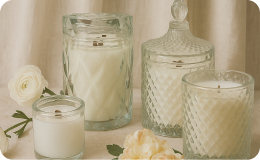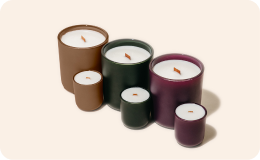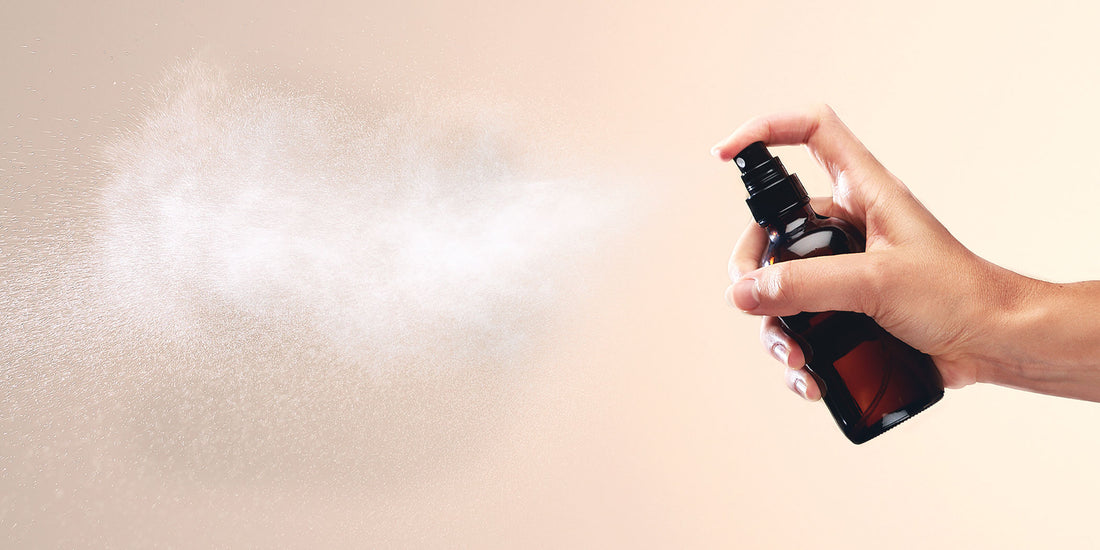Guide to VOC Levels & Making Fragrance Products

When making a fragrance product like a diffuser, perfume, or room spray, it’s important to take into consideration the VOC content of the fragrance you are using to ensure it remains within Federal regulations.
Get ready to learn all about VOC content and why this little acronym is so important to consider when creating personal and home fragrance products.
We'll explain what VOCs are, what the maximum levels are for different products, and share easy guidelines for how much fragrance oil to use when formulating. We also share a handy VOC calculator that you'll want to bookmark in an instant!
what is a VOC?
VOC stands for Volatile Organic Compound. VOCs are gases that are emitted into the air from products or processes. Any time you are spraying a product into the air, you are emitting gases.
Products such as air fresheners, reed diffusers, room sprays, body spray, perfumes and colognes, all have VOCs. VOCs are regulated by government and state agencies.
what are VOC approved levels?
The EPA is the federal agency responsible for regulating VOCs to the outdoors in order to prevent the formation of ozone.
Different products have different VOC approved levels. The highest VOC level when making perfume depends on your formulation so follow these guidelines.
- Air fresheners, diffusers and room sprays have a max VOC allowance of 18%.
- Colognes, body sprays and perfumes have a max VOC allowance of 65-75% depending on the percentage of fragrance in your formulation.
- All alcohols have a VOC of 90-100%. This is one of the reasons that water is used in sprays since water has 0% VOC so it helps you achieve the 18% MAX VOC for aircare products. For colognes and eau de toilettes that are 5-20% fragrance, you are allowed to have a max VOC of 75%. For any colognes and perfumes that are over 20% concentration, you are allowed to have a max VOC of 65%.
use our VOC calculator
If you'r trying to calculate the VOC level of the products you are making, Makesy has an easy VOC calculator to help you determine your VOC level.
Your VOC level is determined by (Percentage of Base being used x Percentage of VOC in Base) + (Percentage of Fragrance being used x Percentage of VOC in Base).
Here's an example: Say you’d like to use 20% Fragrance Load + 80% Base. Your Fragrance has 10% VOC and your base has 1% VOC.
Your formula would be: (80% Base x 1% Base VOC) + (20% Fragrance x 10% Fragrance Base). Your total VOC content would be 2.8% and you are fully compliant with VOC regulations.

how much fragrance oil should you use?
- Parfum (Perfume) products normally contain 20-40% fragrance oil.
- Eau de Parfum (EDP) normally contains 15-20% fragrance oil.
- Eau de Toilette (EDT) products normally contain 5-15% fragrance oil.
- Room spray percentages are heavily determined by your VOC % though average fragrance percentages vary between 2-5% depending on the strength of the fragrance.
Our Linger+ functional fragrance oils are a great choice for room sprays. We’ve tested them to last on surfaces up to seven days!
It's important to note that room sprays contain water so the fragrance must be solubilized with polysorbate first. It can be anywhere between 2-1 to 4-1 polysorbate-fragrance.
Remember that anytime you use water you must always add a small amount of preservative. Without a preservative, water can form bacteria.
We suggest using between 20-25% fragrance load in reed diffusers. All of our fragrances are compatible for use in diffusers, but you’ll need to test at your desired fragrance load to ensure that you are getting the throw you desire.
Do not use more than 40% fragrance load with any of makesy fragrances. If you are using fragrance oils from another manufacturer, please be sure to find out the VOC content of that fragrance.
You can use the formula and VOC calculator here to ensure you are using an appropriate amount of fragrance.
what VOC is considered low?
Many bases on the market contain over 5% VOC so it is important to know both the VOC content of your base AND your fragrance to ensure you are compliant with regulations.
Makesy bases are formulated to be far lower than competitors. Our All Natural Reed Diffuser Base contains 0% VOC content. This means you can use more fragrance without fearing VOC issues.

what to do if your spray base is cloudy?
When your spray base becomes cloudy, this is typically due to one or more of the ingredients not solubilizing properly. The most common culprit is your fragrance.
Try mixing your fragrance oil with Polysorbate 20 at a 2:1 ratio (2 parts Polysorbate, 1 part fragrance oil) as a starting point to help the mixture blend properly.
Some thicker fragrances, or formulas with a higher water content, may require more Polysorbate 20. Continue to increase the ratio of Polysorbate to fragrance until the mixture stays clear.
why is the fragrance oil separating from the base?
Don’t panic, we can fix this! Fragrance oil and oil molecules are much larger than water molecules, so they tend to separate.
If you first mix your fragrance oil or base oil with a solubilizing product, like Polysorbate 20 (a medium sized molecule), it helps the ingredients to blend into water, witch hazel, alcohol, or whatever other liquid base you are using, which tend to be made up of much smaller molecules. In sum, mix your fragrance and solubilizer first, and then add to your base secondarily.
does the order you mix your ingredients matter?
Yes! We all know the saying that water and oil don’t mix. Well, that isn’t exactly true. Sometimes they do, but we need to work a little maker magic to make it happen. Fragrance oil and oil molecules are much larger than water molecules, so they tend to separate.
If you first mix your fragrance oil or base oil with a solubilizing product, like Polysorbate 20 (a medium sized molecule), it helps the ingredients to blend into water, witch hazel, alcohol, or whatever other liquid base you are using, which tend to be made up of much smaller molecules. In sum, mix your fragrance and solubilizer first, and then add to your base secondarily.
do you need to add water to a room or body spray?
If you are using 100% alcohol, you need to dilute with something else to meet the VOC limit. The most common ingredient is distilled water.
how to get rid of the smell of witch hazel?
The smell from the witch hazel is 100% normal and this smell is produced by the natural flowers that are made with. If you do not like the smell, we suggest cutting the amount of witch hazel and instead substitute for alcohol.
As an alternative, you can also try switching completely to alcohol, while the smell might be strong at first, the alcohol will evaporate leaving just the fragrance behind. As a last option, you can increase the fragrance close or to the maximum safe amount.
where to buy ingredients for making perfumes & sprays?
Makesy offers a vast collection of ingredients for making diffusers, room sprays, perfumes, and other home fragrance products. Shop our full collection here of perfume accords, fragrance oils, kits, perfume bottles, and bases.
Happy making!









